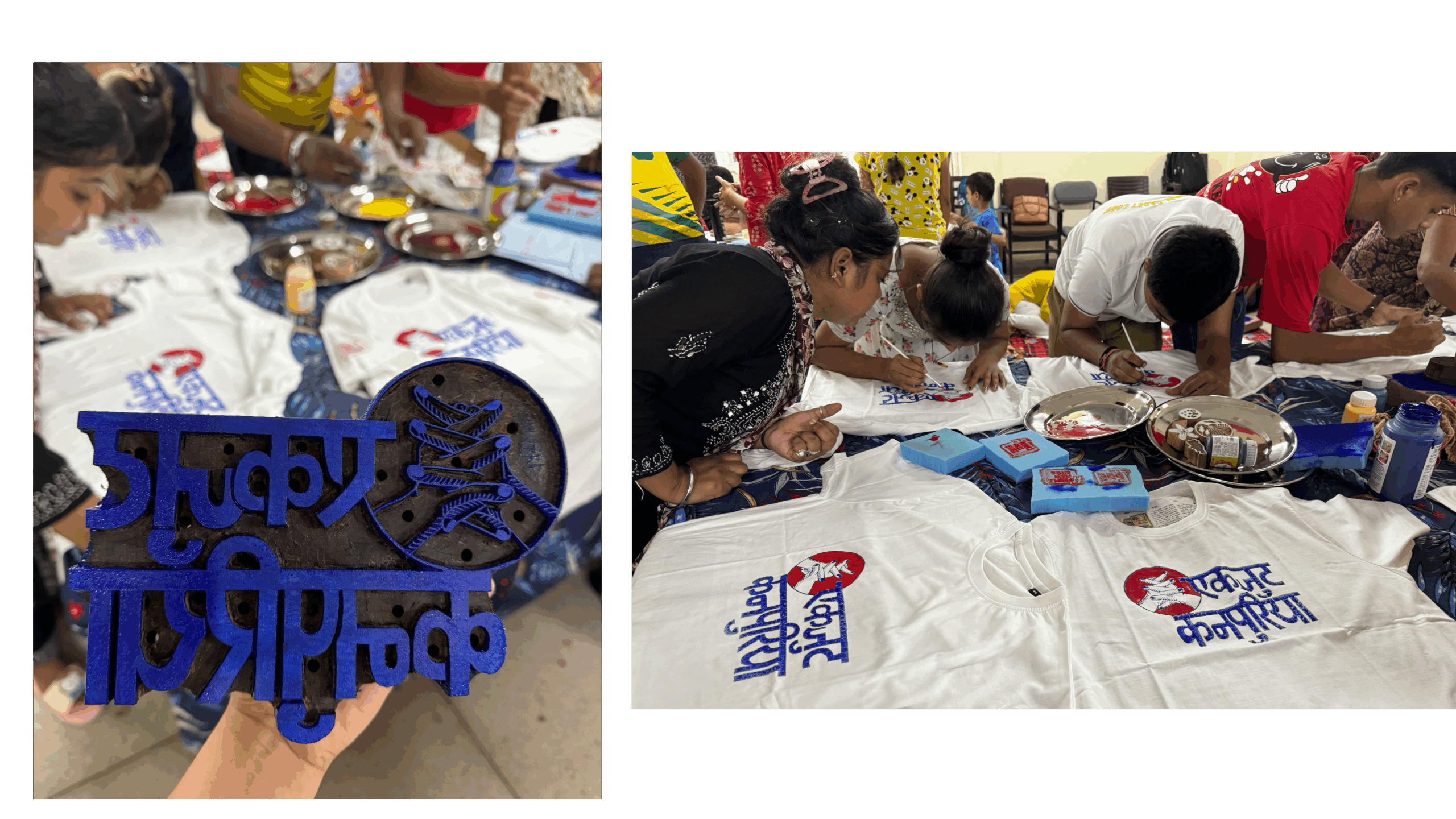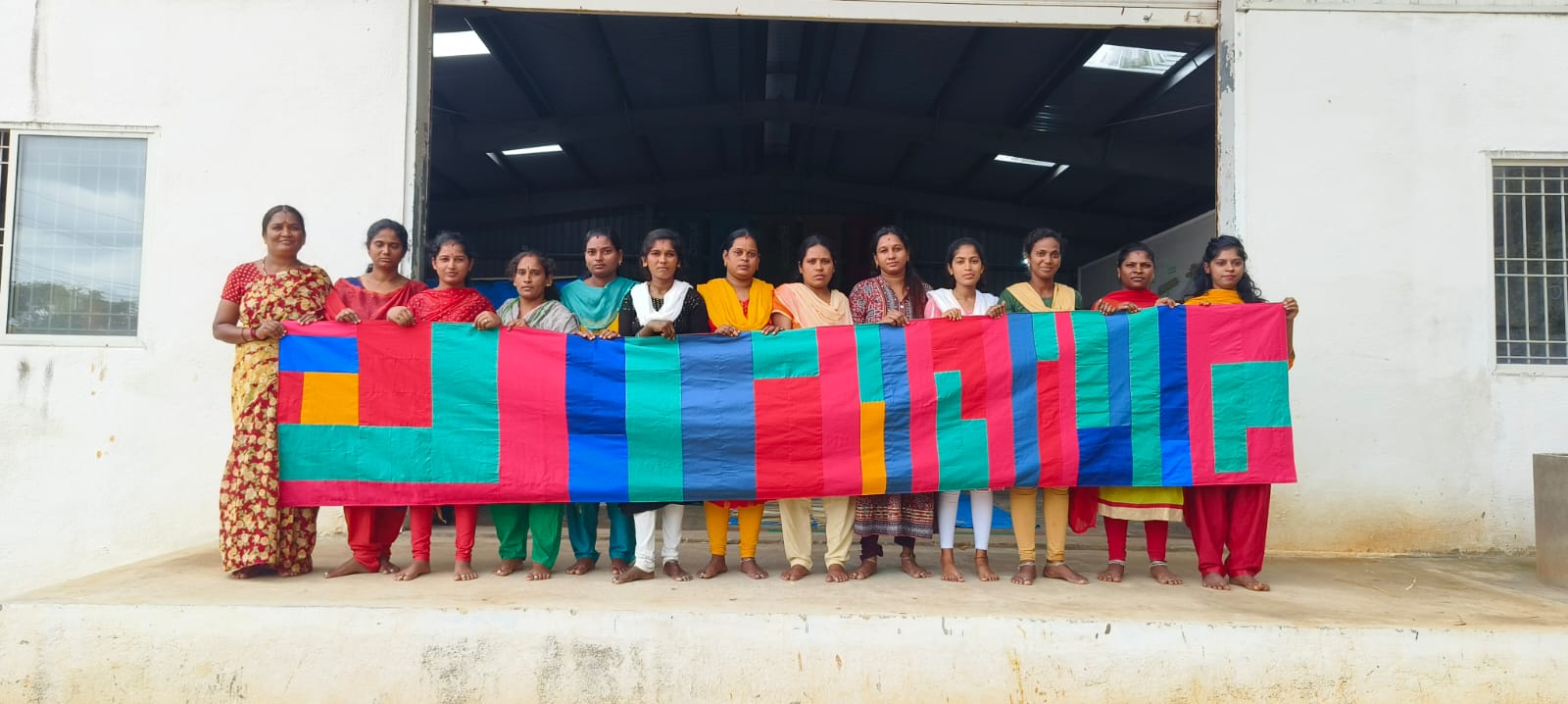Crafting New Narratives: India’s Handicrafts and Their Role in Social Impact
How India’s traditional crafts are becoming powerful mediums for storytelling, dignity, and social transformation.
Tanisha Arora and Preksha Sharma · 4 Minute Read Time

In 2010, I was empanelled as a designer with the Office of the Development Commissioner (Handicrafts), with a mandate to reimagine our traditional arts and crafts through contemporary sensibilities. This marked the beginning of my journey across India to immerse myself in the rich traditions of its handcrafted arts. From the intricate blue pottery of Rajasthan to the 4,000-year-old Dhokra metal casting techniques in Bastar; from the Bidriware of Aurangabad to the rich textile legacies of Kutch—every craft I explored was a doorway into a deeper cultural conversation.
Working closely with crafts and their makers instilled in me a profound belief in Indian handicrafts as living archives of culture, memory, and identity. Woven, carved, and cast into fabric, wood, and metal, each artefact carries within it the imprint of lived stories. In fact, many Indian crafts—like Madhubani paintings, Pattachitra, Kalamkari, and Warli art— tell stories through imagery and sometimes accompanied with a song.
What moved me the most was how deeply these crafts are embedded in the communities that have been preserving the intergenerational knowledge with quiet grace and dignity. Witnessing craft communities woven together by invisible threads of skill and creativity strengthened my faith in crafts as a powerful tool for building community and preserving heritage.
Recommended Read: Handmade in India by Aditi and M.P. Ranjan is an indispensable read for those who are curious about the depth and diversity of Indian craft traditions. With over 550 crafts meticulously documented, this book is not only a visual feast but a cultural treasure.
Crafting a sustainable future
India’s craft sector is the second-largest source of employment after agriculture. When the Covid-19 pandemic struck, it caused widespread job losses and forced a mass exodus of artisans from cities. Nearly a quarter of the craftspeople lost over 75% of their annual income. Yet, in the midst of this crisis, something small and beautiful began to take shape. Fragmented stakeholders began to team up with artisans to build a self-reliant, sustainable future.
One such vision came alive in 2023 at the “Constellation of Art, Craft, and Design” exhibition in Mumbai. Curated by creative entrepreneur Aradhana Nagpal with Project Tarasha and Creative Dignity, the showcase emerged from pandemic-era solidarity. Its mission was clear—support artisans with dignity, build their entrepreneurial capacities, and invest in the next generation of craftspersons.
At Purpose, where we work at the intersection of storytelling and social change, we’ve seen how these age-old practices evolve into powerful tools of advocacy provoking thought, forging connections, and sparking action. Whether the issue is air pollution, gender inequality, or mobility, craft becomes a language that brings the invisible into view. Here are three stories where craft not only captures lived experiences but also drives meaningful social transformation:
Delhi: “Hawa Mein Baat” – Stitching the Unseen Struggles of Air Pollution
Hawa Mein Baat: An art based approach to air pollution
Delhi has long ranked among the world’s most polluted cities. But even within its borders, the burden of toxic air falls unevenly—some neighbourhoods choke far more than others. Nand Nagri and Bhalswa in northeast Delhi are such areas where towering landfills eclipse the trees and houses.
Determined to highlight their concerns, the women of Nand Nagri and Bhalswa participated in a series of art workshops organised by Help Delhi Breathe, Mahila Housing Trust, FICA, and artists Niroj Satpathy and Moumita Basak. Transforming everyday throwaways, the women created personal narratives through detailed stitched works and striking mixed-material pieces.The resulting artworks transcended personal expression and became a statement. A stitched wedding card, for instance, symbolised the struggle of finding marital prospects in an area overshadowed by landfills. Other pieces expressed a longing for cleaner times, featuring images of birds in flight and natural landscapes starkly contrasting the harsh reality of pollution.
By giving the women a platform to share their stories, the project validated their struggles and empowered them to raise awareness about the disproportionate impact of pollution on their communities. For Anita Devi, the workshops became therapy. “I enjoyed doing the silai, sitting with other women and discussing our challenges. I learnt that art can be used as a way of engaging people in a new and interesting way,” she shared.

Kanpur: Block by Block, Crafting Change with Ekjut Kanpuriya
In Kanpur’s informal settlements like Tosha Khana and Rani ka Bageecha, a quiet movement is unfolding. A collective of women and youth are championing sanitation through better waste management, united under the vibrant identity of Ekjut Kanpuriya.
At the heart of Ekjut Kanpuriya is the brand identity, Karkata mudra, a symbol of unity and strength drawn from Kathak, the classical Indian dance form. To embody this symbol, a block printing workshop was held with local ambassadors, featuring hand-carved wooden blocks made by a traditional artisan. For the participants, rooted in shared heritage and collective action, this participatory art was a reclamation of their story, a transformative act to reimagine both their communities and their own sense of agency.


Bengaluru: A Bus Stop, a Quilt, and a Cry for Mobility
Further south, the Alli Serona collective in Bengaluru has been working to improve mobility access for women from informal sectors. When differences around caste, geography, and language threatened unity, art and craft became the bridge.
In 2023, the Alli Serona collective created a mobile art installation—an interactive bus stop that toured underserved settlements in Bengaluru. At its heart was a 20-foot kowdhi quilt, handcrafted by women from Channapatna, Karnataka.
Kowdhi quilts, traditionally crafted from repurposed waste fabrics, symbolise love, warmth, and continuity, often passed down from mothers to daughters on their wedding day. The act of bending over their needles, threads, and fabric scraps also allowed the women to mend their differences. Adorning the ceiling of the installation, the 20-foot kowdhi quilt became a symbol of their collective power, solidarity, and transformative change.
Recommended Tool: Participatory Art for Social Impact (PASI) Framework
The PASI Framework is a powerful guide for those working at the intersection of creativity and social change. It offers a clear roadmap to co-create with communities by tapping into local art and cultural practices. PASI helps start conversations, makes the community feel more in charge, and leads to big changes together.
Final Thread
Crafts are tactile, personal, and profoundly powerful. Every handmade gesture is deliberate, imperfect, and deeply human. In it lies the potential to reclaim space, reshape narratives, and reimagine futures. In a world rushing toward automation and speed, craft invites us to pause, reflect, and reconnect with our histories, our communities, and our collective future.